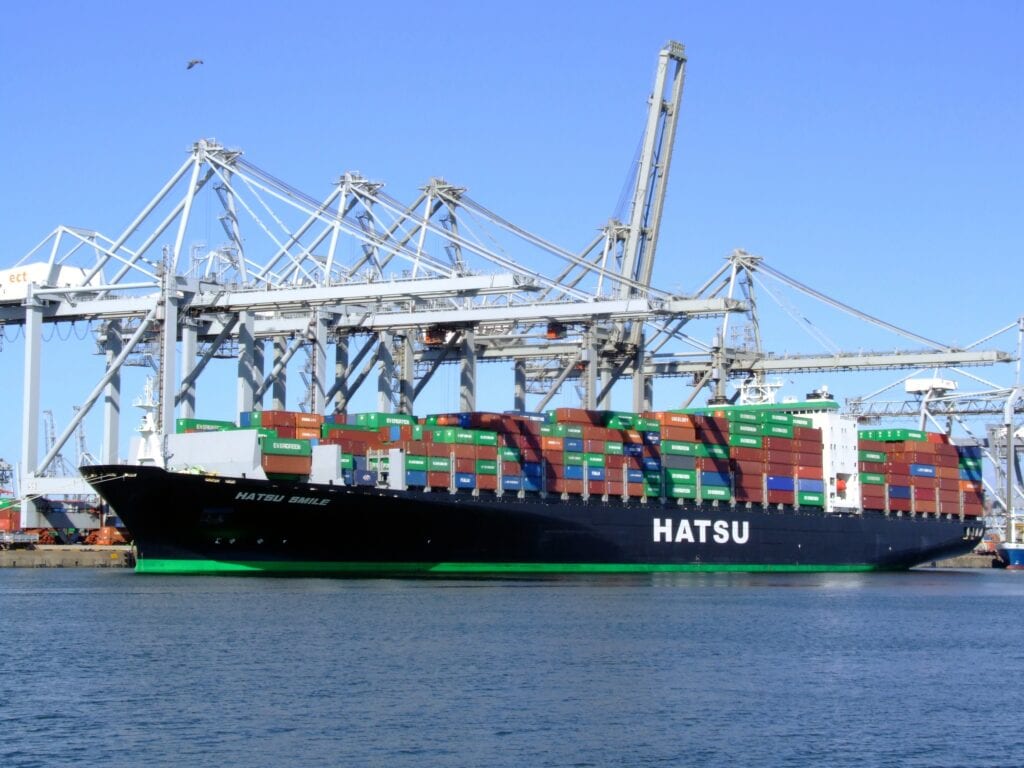This article gives you the keys to understand the impact of the digital era on supply chain management. Is digitalization the future of supply chain management? Read more to understand the challenges of digitalizing supply chain management.
Introduction

Container ship in the port of Rotterdam The digitalization of supply chain is a top priority for a large majority of companies. This would allow them to reduce costs and increase their revenues.
Internet of things (IoT)
The Internet of Things is used at various stages of the supply chain and allows for improved management.
This technology allows, for example, to know with precision the location of goods in real time thanks to GPS sensors installed on the goods. The tracking of goods is also simplified thanks to GPS sensors, which inform all the actors of the supply chain of the progress of the goods. Sensors installed on the delivery vehicles, transmit to the company real time data, such as speed, breaks, location and delivery in real time. These sensors can also be very useful to monitor the storage of particular goods such as refrigerated. Sensors installed in vehicles can monitor the temperature of the vehicles and transmit any suspicious information to the logistics manager.
What companies are using this technology?
Many companies have already invested in the internet of things for their supply chains. This is the case of Amazon, which uses it to track inventory via readable codes on packages. In addition to Amazon, Google Wing and AliExpress are investing in this technology to develop autonomous deliveries.
Thus, the Internet of Things technology allows to control the data in real time which guarantees a better visibility and traceability of the whole supply chain process
Artificial intelligence (AI) and robotics

Artificial Intelligence Artificial intelligence is increasingly used to optimize production, storage and transportation capacities. The use of machine learning allows companies to forecast future demand more efficiently.
Machine learning builds algorithms on the basis of past business data in order to make predictions about future demand. Without the use of machine learning, it is difficult to accurately forecast future demand, as suppliers lack visibility. This is not without consequences for the company. A bad prediction of demand leads to many consequences, such as increased costs, reduced customer satisfaction and loss of time.
Artificial intelligence, in the field of warehousing, allows to strongly improve productivity. AI in combination with robots can optimize the path of employees within the warehouse, automate repetitive tasks or bring goods directly to the order pickers.
Moreover, in the field of transport, artificial intelligence allows to optimize the planning of deliveries according to several criteria such as time, number of miles, or the capacity of vehicles.
Who invests in Artificial Intelligence and robotics?
Walmart is investing in Artificial Intelligence combined with robotics to create autonomous delivery vehicles. Amazon combines these two technologies to create autonomous warehouse robots.
So, artificial intelligence can reduce costs, optimize the supply chain management and increase customer satisfaction
From Big Data to Cloud

Big Data flows The use of the cloud has a major objective for companies, to improve the transmission of information, communication and decision making.
Big data has a major interest for the management of the supply chain. It allows to transform raw data into usable data. The cloud comes after this step, because it allows this data to be shared and made accessible to all companies. The goal of big data and the cloud is the transparency of information that can be related to the management of stocks, products and production. For example, companies like DHL, FedEx or Nestle are investing in this technology in order to integrate in real time the slightest change that could occur.
Big Data is used at several levels in the supply chain, allowing to better manage supplies and optimize the delivery of goods.
Conclusion
The digitalization of supply chain management is a promising upheaval for all companies. It brings to all levels of the supply chain more agility, flexibility, security and visibility. For the company, these benefits translate into reduced costs and increased revenues.
References
“Digital supply chain” by Capgemini.
“Supply chain management in the cloud” by Accenture
“Logistics 4.0: Digital transformation of Supply chain Management” by Turan Paksoy, Cigdem Gonul Kochan, Sadia Samar Ali.





Recent Comments